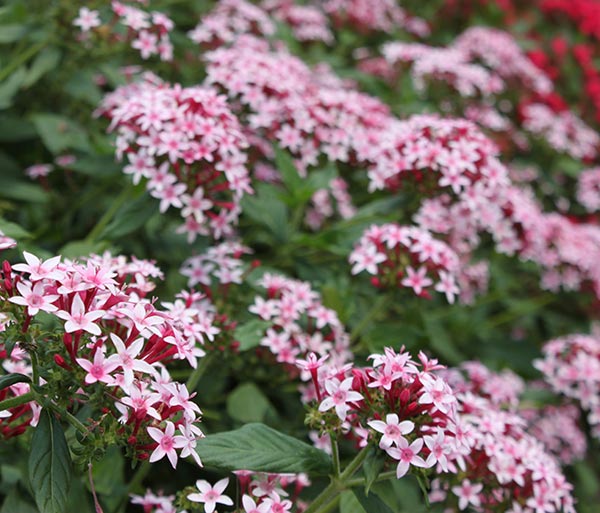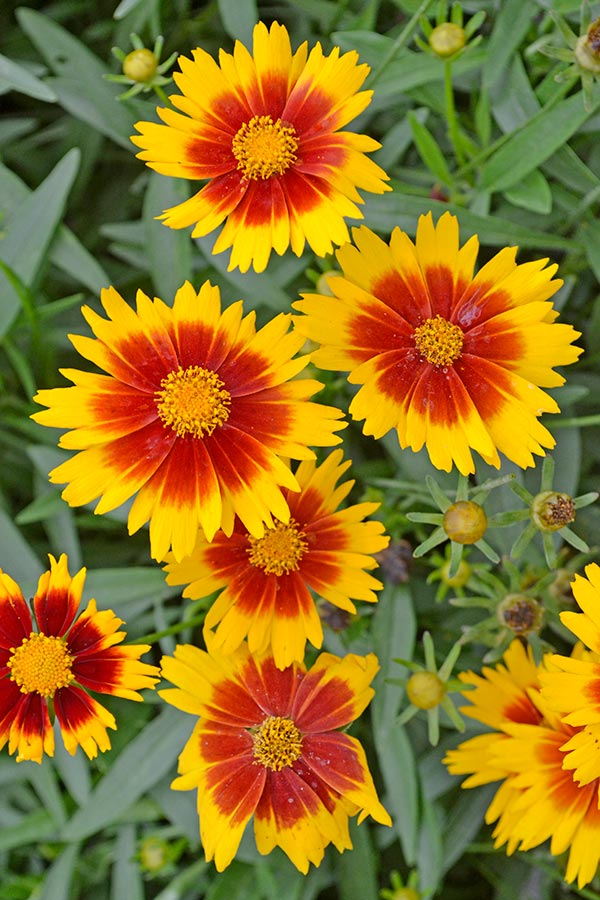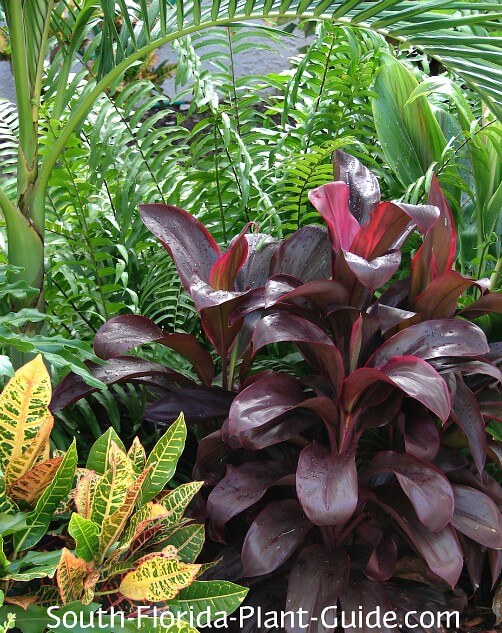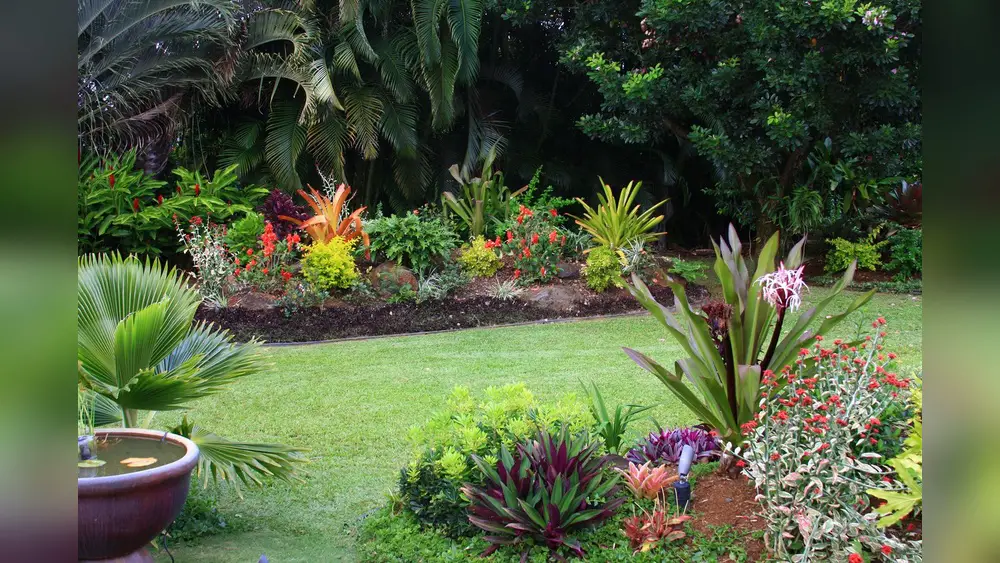Imagine stepping into your yard and instantly feeling a burst of vibrant life, color, and natural beauty tailored perfectly for Florida’s unique climate. You want a garden that’s not just pretty but also easy to maintain and thrives year-round under the Florida sun.
Whether you’re starting fresh or looking to upgrade your outdoor space, knowing the best plants for your Florida yard can make all the difference. You’ll discover top plant choices that flourish in Florida’s heat, clever design tips like the “rule of three” to bring harmony and balance, and expert ideas to create a stunning, low-maintenance garden you’ll love spending time in.
Ready to transform your yard into Florida’s best? Let’s dive in!

Credit: costafarms.com
Florida-friendly Plants
Florida’s climate challenges gardeners with heat, humidity, and occasional droughts.
Choosing the right plants makes all the difference for a thriving yard.
Florida-friendly plants grow well with less water and care.
They support local wildlife and help protect the environment.
Native Drought-tolerant Species
Native plants survive Florida’s dry spells with little extra watering.
Butterfly Milkweed attracts pollinators and brightens the yard.
Seagrape offers shade and edible fruit with minimal care.
Beach Sunflower blooms beautifully even in sandy, poor soil.
Low-maintenance Choices
Low-maintenance plants save time and reduce garden chores.
Goldenrod grows well in rain gardens and controls water naturally.
Muhly Grass adds soft texture without needing frequent trimming.
Yaupon Holly stays green year-round and requires little watering.
Best Flowering Plants
Flowering plants bring color and life to Florida yards.
Firewheel dazzles with red blooms that attract butterflies.
Coralbean shows off bright flowers and thrives in heat.
Swamp Sunflower brightens wet areas and supports bees.

Credit: costafarms.com
Design Principles
Design principles form the foundation of any beautiful yard. They guide plant selection, layout, and color choices. By following these principles, your Florida yard will look organized and inviting. Simple rules help you create balance and harmony in your outdoor space.
These principles also make your yard easier to maintain. They help plants thrive in Florida’s climate. Using the right design techniques enhances your yard’s natural beauty. Let’s explore some key design ideas that work well for Florida gardens.
Rule Of Three In Landscaping
The rule of three means planting in groups of three. Odd numbers like three create a natural look. Even numbers can seem stiff or too planned. Grouping plants in threes adds rhythm and flow to your yard.
Use three of the same plant or three different ones with similar heights. This method works for flowers, shrubs, and trees. It makes your yard feel balanced and lively without being crowded.
Balancing Color Schemes
Choose colors that complement each other well. Balance bright colors with soft, neutral tones. Florida’s sunlight makes colors pop, so avoid too many bright shades together.
Use greens and earth tones as a base. Add splashes of color with flowers or foliage. Keep your color palette simple and consistent. This balance creates a relaxing and pleasing yard.
Creating Focal Points
A focal point draws the eye and adds interest. It can be a unique plant, a garden sculpture, or a water feature. Place focal points where visitors naturally look first.
Use taller plants or bright colors to highlight focal areas. Avoid clutter around the focal point. This helps your yard feel spacious and organized. Focal points guide visitors through your garden with ease.
Plant Groupings
Plant groupings create a strong impact in any Florida yard. Grouping plants brings harmony and structure. It helps gardens look fuller and more natural. Thoughtful arrangements invite birds and butterflies. They also reduce maintenance by filling spaces well. Choosing the right plants and placing them smartly improves yard beauty and health.
Odd-numbered Arrangements
Use odd numbers like three or five for plant groups. Odd numbers feel lively and natural to the eye. They avoid the stiff look of even numbers. Grouping plants in threes works well for most Florida yards. It creates a balanced but dynamic layout. Odd-numbered groups help guide the viewer’s gaze smoothly.
Combining Textures And Colors
Mix plants with different leaf shapes and sizes. Rough, smooth, spiky, and soft textures add interest. Use a range of green shades and bright flowers. Combining textures with colors makes the garden vibrant. Contrast highlights each plant’s unique beauty. This approach suits Florida’s diverse climate and sunlight.
Hardscaping Elements
Include stones, mulch, or wood between plant groups. Hardscaping defines spaces and adds contrast. It helps prevent soil erosion and controls weeds. Paths or borders made from hard materials improve flow. These elements create a polished look for your yard. Hardscaping balances soft plants with solid textures.
Water-wise Landscaping
Water-wise landscaping offers a smart approach to gardening in Florida’s climate. It helps save water and keeps your yard healthy. By choosing the right plants and design, you reduce water waste and create a beautiful space. This style fits well with Florida’s weather and soil conditions.
Rain Gardens Benefits
Rain gardens collect rainwater and let it soak into the ground. They reduce runoff and prevent flooding. These gardens improve water quality by filtering pollutants naturally. Rain gardens attract birds and butterflies, adding life to your yard. They also use native plants that need less water and care.
Plants For Moist Areas
Some plants thrive in wet or moist soil. Examples include goldenrod, swamp sunflower, and milkweed. Muhly grass and firewheel also do well in damp spots. These plants handle Florida’s rainy seasons without problems. They help keep the soil stable and prevent erosion.
Controlling Water Levels Naturally
Using natural methods helps manage water without pipes or pumps. Mulch keeps soil moist and reduces evaporation. Creating gentle slopes guides water to plants that need it. Grouping plants by water needs saves water and keeps them healthy. These simple steps balance water levels in your yard effectively.
Popular Nurseries In Florida
Florida’s climate supports a wide variety of plants. Nurseries here offer many choices for every gardener. These nurseries provide healthy plants, expert advice, and garden supplies. Visiting local nurseries helps find plants suited for Florida yards. They also offer tools and decorations to enhance gardens.
Below are some popular nurseries known for quality plants and friendly service.
Green Isle Gardens
Green Isle Gardens in Groveland is a favorite among locals. They carry a large selection of plants, from flowers to shrubs. Their prices are reasonable and the staff is helpful. Customers appreciate the clean, organized space and variety. They also stock gardening tools and decorative items. This nursery is perfect for those seeking healthy plants and good advice.
Apenberry’s Gardens
Apenberry’s Gardens in Orlando offers a wide range of plants at fair prices. They have workshops for beginners and experts alike. Visitors can learn how to build their own terrariums. The nursery focuses on customer education and satisfaction. Their collection includes native and exotic plants. It is an excellent place for gardeners wanting to expand their skills.
Austin’s Backyard Garden
Austin’s Backyard Garden in Lakeland is known for its friendly atmosphere. They specialize in low-maintenance plants ideal for Florida’s weather. Gardeners find helpful tips for plant care here. The nursery offers personalized service for garden planning. It is a good choice for those who want easy-to-grow plants. Their staff shares practical advice for thriving gardens.

Credit: www.south-florida-plant-guide.com
Maintenance Tips
Maintaining a beautiful yard in Florida requires regular care and smart practices. Proper maintenance keeps plants healthy and vibrant. It also helps your garden thrive despite Florida’s unique climate challenges.
Focus on soil, water, and pest control. These key areas ensure your plants grow strong and last long. Follow simple steps to make your yard the best it can be.
Soil Preparation
Good soil is the foundation of a healthy yard. Test your soil to check its pH and nutrients. Florida soils often need added organic matter. Mix compost or peat moss into the soil before planting. This improves drainage and fertility. Avoid heavy clay soils that hold too much water. Loosen the soil to help roots grow deeper. Proper soil preparation reduces plant stress and boosts growth.
Irrigation Best Practices
Watering plants correctly saves water and keeps them healthy. Water early in the morning or late at night to reduce evaporation. Use drip irrigation or soaker hoses for efficient watering. Avoid overhead sprinklers that can cause leaf diseases. Check soil moisture before watering to prevent overwatering. Deep watering encourages strong roots. Adjust watering based on rainfall and plant needs. Consistent irrigation helps plants survive Florida’s heat.
Pest And Disease Management
Monitor plants regularly for signs of pests or disease. Use natural predators like ladybugs to control harmful insects. Remove damaged or diseased leaves quickly. Avoid over-fertilizing, which attracts pests. Choose disease-resistant plant varieties suitable for Florida. Apply insecticidal soap or neem oil as needed. Keep the yard clean by removing debris where pests hide. Early action prevents major damage and keeps your yard healthy.
Seasonal Planting
Seasonal planting shapes a vibrant yard throughout the year in Florida. The state’s warm climate allows gardeners to select plants that thrive in specific seasons. Each season brings unique opportunities to add color and texture. Choosing the right plants helps maintain a healthy and beautiful landscape. This guide highlights the best plants for spring, summer, fall, and winter. Explore ideas for keeping your yard colorful all year long.
Best Plants For Spring And Summer
Spring and summer call for bright, lively plants that enjoy warm weather. Hibiscus blooms with large, colorful flowers perfect for Florida yards. Bougainvillea adds vibrant pinks and purples, thriving in full sun. Plumbago offers soft blue flowers and attracts butterflies. Marigolds and zinnias bring cheerful yellows and oranges. These plants handle heat well and require moderate watering. They create a lively, welcoming space during the warmer months.
Fall And Winter Options
Fall and winter in Florida are mild, allowing some plants to continue blooming. Pansies and violas provide cool-season color in shades of purple, yellow, and white. Camellias bloom with stunning flowers from fall to winter. Ornamental cabbage and kale add texture with their unique leaves. These plants tolerate cooler temperatures and occasional frost. Use them to brighten your yard when many others fade away.
Year-round Color Ideas
Some plants offer color throughout the year in Florida’s climate. Lantana flowers almost continuously, attracting butterflies and hummingbirds. Ixora produces clusters of small, bright flowers in red, orange, or yellow. Crotons add bold foliage with reds, yellows, and greens. Adding palms and ferns brings green structure and texture all year. Combining these plants ensures your yard stays colorful and inviting every season.
Frequently Asked Questions
What Outdoor Plants Are Good For Florida?
Florida outdoor plants thrive with natives like Butterfly Milkweed, Gumbo Limbo, Seagrape, Coralbean, and Beach Sunflower. These drought-tolerant, low-maintenance plants suit Florida’s climate and soil perfectly. Planting in groups of three enhances visual appeal and garden balance naturally.
What Is The Best Low-maintenance Landscape In Florida?
The best low-maintenance landscape in Florida uses native plants like goldenrod, swamp sunflower, and muhly grass. Rain gardens control water naturally and reduce upkeep. Grouping plants in odd numbers, like threes, enhances visual appeal and balance. This approach ensures a sustainable, easy-care Florida-friendly garden.
What Is The Rule Of 3 In Landscaping?
The rule of 3 in landscaping groups plants or elements in threes for balance, natural flow, and visual appeal. It creates dynamic, cohesive, and engaging outdoor spaces by avoiding rigid symmetry. This principle works well with plantings, hardscaping, and color schemes to enhance garden design.
What Plants Can Survive In The Heat In Florida?
Heat-tolerant plants for Florida include Butterfly Milkweed, Gumbo Limbo, Seagrape, Coralbean, Firewheel, Beach Sunflower, and Yaupon Holly. These native species thrive in hot, dry conditions and require low maintenance, making them ideal for Florida gardens and landscapes.
Conclusion
Creating the best yard in Florida means choosing plants that thrive in heat and humidity. Native plants need less water and care, saving time and money. Grouping plants in odd numbers makes your garden look natural and balanced. Use a mix of flowering and green plants to add color and texture.
Remember, simple choices lead to beautiful, low-maintenance yards. Your Florida garden can stay healthy and vibrant all year long with the right plants and design. Enjoy watching your yard grow and attract local wildlife naturally.

